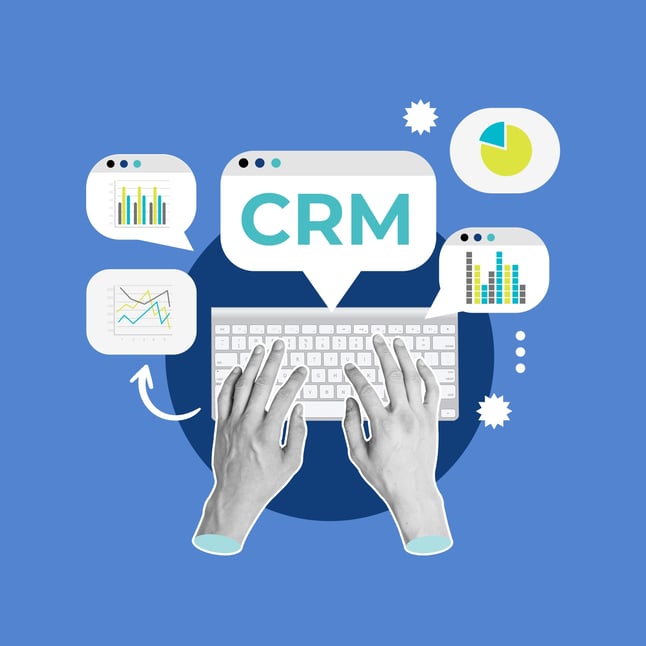Special Update: April 5, 2020
Dear Friends,
March 2020 was like no other March we have ever seen. The beginning of March was awesome. Everything was on the up. The stock market was up, revenue was up, profit was up, business was growing & there was prosperity everywhere! March 2020 took all of that away from us & forcefully dropped us in survival mode. We had to develop a plan to survive, recover and thrive.
Thankfully, we have a game plan. In a collection of videos at www.elaunchers.com/sales you will be able to look, study & learn the system that I have been implementing since 1989. My technology stack of choice has changed over the years but the process and the core philosophy of the system has never changed.
We want to let you know that we are here to help. If you have already watched the videos on www.elaunchers.com/sales, let us schedule a call to review your prospecting & sales process and how you can systematize it. (Some of the videos are published on this page too, for your convenience).
Sadly, COVID-19 has turned every business into a telephone-marketing & telephone-sales organization. Let us share with you what has previously worked for us so you too can survive, recover and thrive into the remainder of the year to come.

Implementing CRM solutions has come a long way since when Personal Computers and MACs first hit the market. In fact, I'd like to tell you the story about how I learned to love Customer Relationship Management.
Shortly after arriving in America, I went about trying to find a job, earn some money so I could feed myself and my wife. Needless to say, we came to this great country with nothing in our pockets (well, maybe enough for bus fare). I tried and tried, and one day, my world changed for the better. At the time, I didn't know by how much.A New Beginning
I happened to wander into a direct marketing firm named JM Perrone Company. I was looking for a job, but I made my appointment to show them a piece of software that I was considering selling (I was really looking for a job). Mr. Perrone, who at a previous point in his life was in a terrible accident and was crippled for several months, was a very welcoming man. He declined the software, but he did offer me a job.
We instantly bonded, and while spending time with him that day, he taught me the skill that I now possess and use to my most significant advantage. I learned to talk. On the phone that is, by telemarketing.
Now, that doesn't sound too impressive if you think about it, after all, in the late 80's everything was being sold by telemarketing. However, it wasn't necessarily the words of persuasion I found most valuable; it was the system.
You see, the JM Perrone company was built by Mr. Perrone selling his services by way of the telephone, and because he was immobile due to the accident, he spent every day at his desk with just a few innocuous tools; a card box, 3X5 cards, a stapler and puller, and a multi-colored pen. Within the box were dividers numbered 1-31. I think you might know where this is headed.
Then and Now
A couple of years ago I created some videos to share what I know about business growth through the use of the telephone. Here’s video number one of four in the series. Within this article are links to all of them, but if you’re interested in viewing please start with video number one and proceed through the series in order.
Pre-Automation
This early CRM system was entirely manual, done by daily attention to a stack of leads, nurturing, educating and informing, and making sales.
Mr. Perrone taught me the system of notating a card with the name, phone number, and address. He used one color for some comments, another for dates, one more color for follow up notes for himself.
He learned as much as he could about the business that he would call, and with a well-rehearsed script, he would dial for dollars.
At that time, Mr. Perrone did not have, and there were few ways to automate much of anything, let alone an automated way to keep track of who is interested, who isn't, when might they be, and so on.
So, he taught me his Fail-Safe method of a conversion path. The unconverted lead cards were stacked on the desk, and once a note was placed on them, they went into the box.
And in return, I showed him how I can simulate the behavior of the box using a DOS-based CRM system called ‘Telemagic’. I kid you not, other salespeople actually made fun of me and the software. They called my software based system a ‘Tele-waste-of-time’. Eventually I gained their love and respect when I started booking appointments for them to go pitch & close.
The result of each call was documented on the card, with the date, time, and next step. Mr. Perrone even used a form of shorthand to speed things up. LMTC stands for left message to call. CB1/23 means call back January 23rd. NA for no answer. If a business card accompanied the lead information, it was stapled right onto the 3X5 card for safe keeping.

Once the notes were written on the card, a date to follow up was selected either by the person telling when they would take another call, or whether it should be within the next couple of days. The card would then be placed in the box in the proper date slot. The cards that have had no success remain on the pile on the desk.
If the card got filled with notes and the prospect had yet not been converted, he'd staple on another card. Moreover, I learned fast, and all along the way, Mr. Perrone coached me on every call.
This was impressive to this broken English-speaking newbie, and I got very good at selling over the phone.
This system is what used to be known as a Tickle File, Call Back Box, TK file, Close file, and other not-so-nice names, but the fact is, it's a fail-safe system that works as long as the human works it.
This is the second video of my 4-part series on my ‘secret sauce” formula for business growth through telemarketing. I hope you enjoy it.
The idea of using cards and a box with multi-colored pens might sound like some pretty boring and dull work, but to me, it was thrilling. Each time I made a call and got through to someone, I’d start out thanking them for taking my call. I even had custom ‘thank you’ cards made up for me that said ‘Thank you for being nice to me on the phone’ on the cover, and inside it said ‘small things make a big difference’. I would send out a thank you card to everyone who actually talked to me. I chatted conversationally. I found reasons to build a relationship.
I did a bunch of research on them before the call. (Back in those days, research was hard because there was no Google. I spent about an hour or two a day in the library writing notes. I used to get the Boston Globe and I would clip out articles and call people who were featured in those articles. I would clip out ads from the Help Wanted section and then call on companies who were looking to hire marketing talent. I did that because if they were looking to hire marketing people they are growing and they are understaffed in their own marketing department.
I asked everyone in the company to bring me all their ‘junk mail’ from home. I soon had a pile of everyone’s junk mail that I sorted out, identified companies that were in my desirable geographical area. If these companies were printing and mailing things that we could possibly compete for, I called to have a conversation about the mail piece I just got in the mail.
There was always a reason or my call, and I started my script with ‘My Name is Parthiv Shah, I am from the JM Perrone Company and the special reason for my call today is…’. My goal was to have a meaningful, friendly conversation with the hopes of selling the service.
Some calls were both, but most conversations were pleasant. I loved it then, and I still do today. Even the people who wanted to ‘shoo me away’ were nice, courteous and polite. Some people did not understand what I was saying, so if they told me that they don’t understand me, I would ask them “would you prefer to speak to someone without an accent?” and for some reason, NO ONE took me up on that. 😊
That's where my often-quoted line of "If I'm not making money, I'm making friends" originated.
Also, for the first ‘real’ job in a new country, I was overjoyed to be counted on to be part of the future of someone else's company. That would lead me to my own company someday, which it has. This was the first time I was making money ‘sitting down’. All the jobs I have held prior to this, I was working but never had an opportunity to SIT in a chair at a desk. I was grateful for the opportunity.
Simple or Complex
Now what I have just shared with you may sound like no big deal, but if you are thinking that you'd be wrong. The lifeblood of a company comes from humans creating relationships with and converting them to paying customers; plain and simple.
However, it's not simple at all. Operated and managed correctly, CRM Implementation and Effectiveness requires said salesperson to have an Iron Will. It requires Military Grade Discipline. Nothing less will do. (Mr. Perrone himself is a US Military veteran. I forgot which branch he came from, but I think he is a marine who retired-injured. A marine is a marine until and after death.)
And an effective implementation requires a CRM system, on little cards in a little box, or a fully automated CRM system like HubSpot, Infusionsoft, Salesforce, Zoho, vTiger, Sugar, Dynamics, Outlook BCM, Sage, Telemagic, Act, Netsuite, salesnet or anything else. (I have actually worked on all of the software I mentioned here.) TODAY I am big fan of Hubspot because of it’s human-friendliness and intuitive user interface. I found that humans are more compliant if the system is human-friendly.
I came from military background myself. I was in the Indian Air Force, so doing what I am told to do repetitively without compromising my enthusiasm came naturally to me, but I found that civilians are so weak, and they tend to breakdown quickly when they are in a human-unfriendly territory.
For that reason, human-friendliness of a human-facing computer software can make a significant difference in human’s (especially a civilian’s) performance.
It's more important to have a fine-tuned, fail-safe system that is well-managed. The mechanics are a close second. The attention to detail is primary to become successful.
In the old days, marketing was utterly separate from sales. The two departments often didn't even communicate other than complaining about one to the other.
Today, the lines have blurred to the point that most call the entire customer acquisition as "marketing." There is still selling involved of course, but if there are two leaders for the team, their teams and themselves must work hand-in-hand. Sales and marketing are intertwined to the point that they’re almost one.
Responsibilities
The job of ensuring there are sufficient GOOD leads fall on a few people's shoulders, but mainly the CEO or business owner. That's right, either delegating the job to a marketing team, but also following up on the expectations. Inspect what you Expect. Nothing less will do. Iron Will – Military Grade Discipline.
It's also the Boss' responsibility to keep the team motivated. Great salespeople are a funny lot when it all gets boiled down. The challenge of the sale is what motivates them most of the time, more so than money. They get their vim and vigor from the sale.
If you happen to have a sales team, you should watch one of the best films on how NOT to treat salespeople, "Glengarry Glen Ross," a drama about the hustle of sales set in the 1960s. Powerful.
On the other hand, I find the whole ‘coffee is for closers’ video distasteful, disparaging and disrespectful. ‘Coffee is for closers’ believes that sales people are lazy, stupid and the reason why companies fail. In my opinion, a salesperson never fails, it is the company that fails to deploy the salesperson the right way. It is the boss’s job to identify one’s weaknesses and provide for them.
It's irresponsible for the owner/CEO to expect good salespeople to have to squeeze fresh juice from dried fruit. Shoddy leads can wreck a team, and the business too. Dollars spent on inferior quality leads may as well have been set on fire.
Salespeople also are easily demotivated too. If the leads are not of good quality, emotions drop, demotivation sets in, and revenues recede. Quality leads keep the wheels turning, and its where the revenues ultimately originate. Incentives also keep things moving upward, as long as the pressure to perform is not too intense. Never, never offer "second place gets a set of steak knives, third, you're fired."
In my opinion, a high-quality lead is someone who responded to our best-effort marketing offer that is time sensitive, relevant to the cause, is well educated/indoctrinated and said lead was RECENTLY GENERATED. Much of the heavy lifting is done by online and offline marketing to START a conversation that the humans can carry forward.
It is unreasonable to expect a human to actually start a conversation by cold-calling in today’s day and age. If I start going out as a door to door salesman, I would probably get arrested for trespassing. Bad leads are like ‘soliciting door to door’. Every door in America has a ‘no solicitation’ policy.
Goal Setting
There is always math involved if something is to be quantified. Leads and closes are no different. If the goal is to generate ten new sales per month, you've got to know how many leads must be worked to reach that target. If it takes 100 hits to produce ten new purchases, you've got a 10% conversion rate. However, how many prospects does it take to create 100 conversations that result in another step forward?
Math Makes a Difference
Mathematics is the foundation of all learning, and is even found in Nature (Fibonacci Sequence), and so math is also necessary to successful telemarketing. Rather than go through the explanation of creating the mathematic formula for telemarketing success, Video # 3 has a complete diagram on the whiteboard for you to view.
So, knowing your closing rate and tying it to your goal will tell you how many leads you must generate for your sales team to work is a must. Once you are coasting along and are managing the team, your closing percentage should increase a little each month as the team gets more proficient.
The next needed number is to determine how many hits (a hit is a request for an appointment or request for a literature kit) you'll need to get to reach your new sales goal. That way, you know that when hits are down, even though the lead count is consistent, you've got internal problems to fix, or your leads have soured for some reason.
So here is my ‘secret’ formula that every gungho outbound sales person (I like to call them phone-tigers) should use. A full-time or near full-time "phone-tiger" can have 3 to 4 conversations per hour, 3 to 4 hours per day, 3-4 days per week. If the script is right, if the phone-tiger is motivated, if the list is warm enough and if the call list is made of fresh, qualified, warm leads you can expect 1 to 2 hits per day.
If this math works, you will earn 27 to 64 conversations per week, you will earn 5 to 10 hits per week (or 250 to 500 hits per year) which should generate enough momentum to generate 15 new accounts every 90 days. Not all new accounts will turn in to your blockbuster dream accounts, but your sales and service rituals can take steps to retain, ascend and solicit referrals from them.
Note that this exercise will generate a very large ‘nice conversation list’ that does not always lead up to an immediate ‘hit’. The ‘nice conversation database’ should be adequately used for segmentation and your database administrator should routinely add the ‘nice conversations list’ to your long term nurture and cash surge campaigns.
There's a lot more math in marketing, but for this conversation, it's enough.
The Day to Day
If you think about a salesperson's workflow, it should be divided into thirds. One third is for research, the second for journaling, the remaining one third is calling. One at a time it looks like this:
Research – The act of researching the target, whether it be an individual or a company, a good salesperson digs up information to better understand the person on the other end of the phone. LinkedIn, Facebook, Twitter, Instagram, and whatever other social media sites might be involved with them. Google Alerts is an amazing tool that scans the Wild West of The Web (www) and alerts you when something is written about someone so you can take action at an opportune time.

A good look at the target's website will tell you the products and services they offer, which tells you what their needs might be and how you can provide your solution.
Journaling – By this, I mean the note-taking and email writing part of the overall transaction of understanding, talking to, and what specifics are needed to perform a quality-oriented follow up. Journaling takes into account what you found out in your research, notes from the call, and anything else that might help your cause.

You'll also be journaling, shall I say crafting your message, what you'll offer, anything extra you could offer them in the way of a download, video clip, link to a specific blog article perhaps.
Bits of information such as what you spoke about the last time if there was any mention of their kid's after-school activity, name of pet, wife, any information that would be helpful to help in the relationship building.
Calling – Where the rubber meets the road, so to speak. Around here we refer to the process as "smiling and dialing." The conversation should be congenial, not pushy. Speak to the prospect like a friend, because you are building a relationship. People buy from those they know, like, and trust. Always keep that in mind.
When calling, first check with them to see if they have a few minutes to speak. They might be busy but always answer their phone. This is more common than you think. Be cheerful, upbeat, ask them how their day/week/season is going — light chat to break the ice and soften up the conversation. Don't go right to the offer, try to close or become a pest. Ask permission to present the offer if you have one.

The call should be during times where they would be accessible, avoiding lunchtime by half-hour each side of the standard lunch hour. Many businesspeople work after 5 pm, so don't think it's quitting time just yet.
If you haven't made your hits for the day/week, after-hours can be surprisingly productive. The office is quieter, which means less stress for them and you.
One book that every CEO, every ‘opener’ and every ‘closer’ must read is ‘Selling to VITO (Very Important Top Officer) by Tony Perrinoli. You can read more about this book at https://vitocorporatesalestraining.com/.
The eLaunchers way
At eLaunchers, we use HubSpot CRM to manage our acquisition system. Like I mentioned earlier, HubSpot, Infusionsoft, Salesforce, Active Campaign, or others can function under the system I share. We happen to use (and love) HubSpot for the purpose of sales automation. Everyone can benefit from the free version of Hubspot and almost no small business will outgrow Hubspot. Just keep growing your investment in Hubspot as you experience your growth.
We use a two-title process, Openers, and Closers. An opener is a person on the front end of the entire process, taking the raw leads (prospects) and loading them into the CRM, creating the files, honing the scripts, knowing what to offer, making contact, and generally following up until they sign or decline. We never quit contacting until one of those two things happen.
The Openers are critical players on my team (not that the Closers aren't). They have to be fed quality leads, which responsibility I take on. Openers stay motivated by uplifting conversations they have with people on the other end of the phone. They quickly get demotivated when the leads are lower grade than was expected.
The Openers begin the sequence of conversion by performing the original work of data input, and organization. A companion campaign on Hubspot will send out a series of emails, text messages and trigger-printed marketing material to be sent sequentially via FedEx (yes, we FedEx) while the opener is calling the prospect.
Prospects are loaded into the system and segmented as needed. Some people inquire about an estimate. Some want a strategy session; some have asked about a particular solution we offer. We have several different packages that are available based on needs and budget.
The manual system I shared with you at the beginning of this article is precisely how the automated systems work. Instead of a card and a box, it's on HubSpot. However (or whatever CRM you use), it is only as good as the human that uses it — garbage in, garbage out.
Showing the Love

We love to send gifts, to become a welcome guest instead of an annoying pest. A welcome wow box with a shock and awe package along with some books, brochures, testimonials, Audio CD, goodies, and more is just the beginning. We actually invested in a USB Drive that also doubles as an MP3 player so one can listen to my audio files directly from the USB drive with a headset or plug in the USB drive in the car to listen to the audio files instantly.
The USB drive also has a large number of digital gifts including worksheets, workbooks, swipe files and other ready to use tools. I tend to share before I sell. No one steals stuff, everyone wants to talk to the guy who is giving the gifts.
We FedEx each box to the prospect before a strategy session (free consultation), so they get a taste of who they will be speaking with, the quality of our company, and who uses us. We've got a pretty good stable of testimonials if I do say so.
Something New
Because we have this concept down pat, it's become an integrated part of our monthly agency services as well. We now have this program as part of what we call the Self Managing SALES Department.
The SMSD is a service whereby we appoint our tele-sales prospecting expert, Richard McCarthy, as your strategy lead in establishing a well-honed system with established written rituals to be performed.
It's a Sales Manager Advisory service that not only provides ongoing consulting, but we also work directly with those responsible for the CRM implementation at the client's business. Post-training service calls are part of the offering.
A monthly CEO Dashboard reporting, along with weekly stats review, sales management meeting, and remedial training if needed are included.
This service is typically achieved via GoToMeeting, but some clients prefer live training, face-to-face. For a small fee (and post CORONAVirus) our virtual sales manager will literally travel to your office and spend 3 days working with the openers, closers and CEO to build and tune-up your sales rhythm.
As the President of eLaunchers.com I have access to the best marketing systems anywhere. I have the privilege to be working with the best copywriter on this planet, Mr. Dan Kennedy. I have awesome graphic designers working for our team. We have a world class team doing world-class marketing work.
We invest north of six figures in our annual marketing budget. With everything we have in place, our phones out perform the rest of our marketing efforts COMBINED.
I would love to be able to help you during these uncertain times. If you want to bring this world class system to your business, you can get started for FREE. Click Here to schedule a call with us and let us show you what is working for us.
Let’s work together to grow your business. May the PHONE be with you!
Remember to watch Video #4 and be sure to click below.






